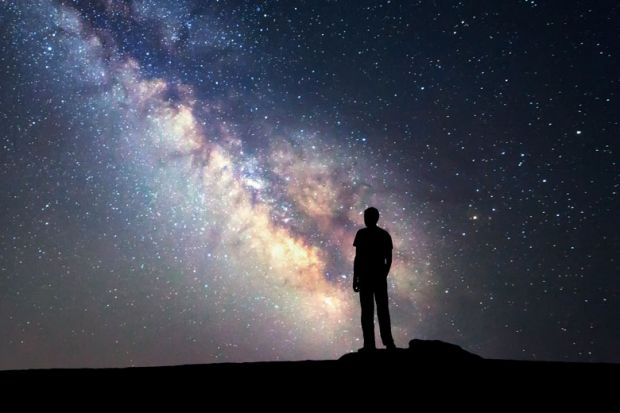If you have a passing interest in astrophysics and would like to deepen it, this book is for you. Neta Bahcall, the director of undergraduate studies at Princeton University, asked its three authors to create an astrophysics course specifically for non-science majors. Welcome to the Universe is the book of the course.
The trio are more than qualified to have taken on the task. Neil deGrasse Tyson, director of New York’s Hayden Planetarium, is America’s best-known astronomy populariser – the Carl Sagan of his day. Richard Gott, a Princeton academic, is an expert on Einstein’s theory of gravity and cosmology, and the author of best-selling popular science books on subjects such as time travel. And, to complete the trio, Michael Strauss, a colleague of Gott’s at Princeton, had just discovered the most distant known quasar in the universe.
Each covers his area of expertise – from planets to stars to cosmology. The breadth and depth of coverage is impressive. In fact, I am reminded of reading The Feynman Lectures on Physics. The Nobel laureate’s addresses were famous for baffling their undergraduate target audience at the California Institute of Technology and appealing instead to the faculty. I am glad to say, however, that these Princeton lectures, although demanding, are more accessible than Richard Feynman’s.
What is most impressive about this book is the way the authors lay out the fundamentals clearly and simply, and yet also take the reader to the present-day frontier of astronomy. All the hottest topics are covered. Most timely is the epoch-making discovery of gravitational waves on 14 September 2015. Gravitational waves, predicted by Einstein a century ago, are the “voice of space”. Nobody knows what we will eventually discover now that, after centuries of “seeing” the universe, we can at last “hear” it.
Among other topics are the invisible dark matter and dark energy, which appears to make up about 95 per cent of the mass-energy of the universe, and planets orbiting other stars, of which several thousand are now known. And Gott uses convincing probabilistic reasoning to argue that we had better get off Earth pronto and establish other outposts of humanity elsewhere in the solar system if we want to avoid being snuffed out by a catastrophic event.
A very small quibble: Strauss says that Arno Penzias and Robert Wilson, co-discoverers of the cosmic background radiation, or “afterglow” of the Big Bang, were at Bell Labs “investigating whether microwaves could be used to communicate using satellites”. Actually, they were scientists specifically employed by Bell Labs at Holmdel to do astronomy using a giant microwave horn that had earlier been used for pioneering experiments with the Echo 1 and Telstar communications satellites. The odd thing about the slip is that Holmdel is less than an hour’s drive from Princeton, and it was a Princeton team that was pipped at the post by Penzias and Wilson in 1965. But this in no way detracts from an authoritative book written with humour and charm.
And the book’s title? In the foreword, Gott explains that when his granddaughter, Allison, was born, the first thing that he said to her was: “Welcome to the universe!”
Marcus Chown, formerly a radio astronomer at the California Institute of Technology, is author, most recently, of What a Wonderful World: Life, the Universe and Everything in a Nutshell (2014).
Welcome to the Universe: An Astrophysical Tour
By Neil deGrasse Tyson, Michael A. Strauss and J. Richard Gott
Princeton University Press, 472pp, £29.95
ISBN 9780691157245
Published 19 October 2016
POSTSCRIPT:
Print headline: Never be lost in space again
Register to continue
Why register?
- Registration is free and only takes a moment
- Once registered, you can read 3 articles a month
- Sign up for our newsletter
Subscribe
Or subscribe for unlimited access to:
- Unlimited access to news, views, insights & reviews
- Digital editions
- Digital access to THE’s university and college rankings analysis
Already registered or a current subscriber?
